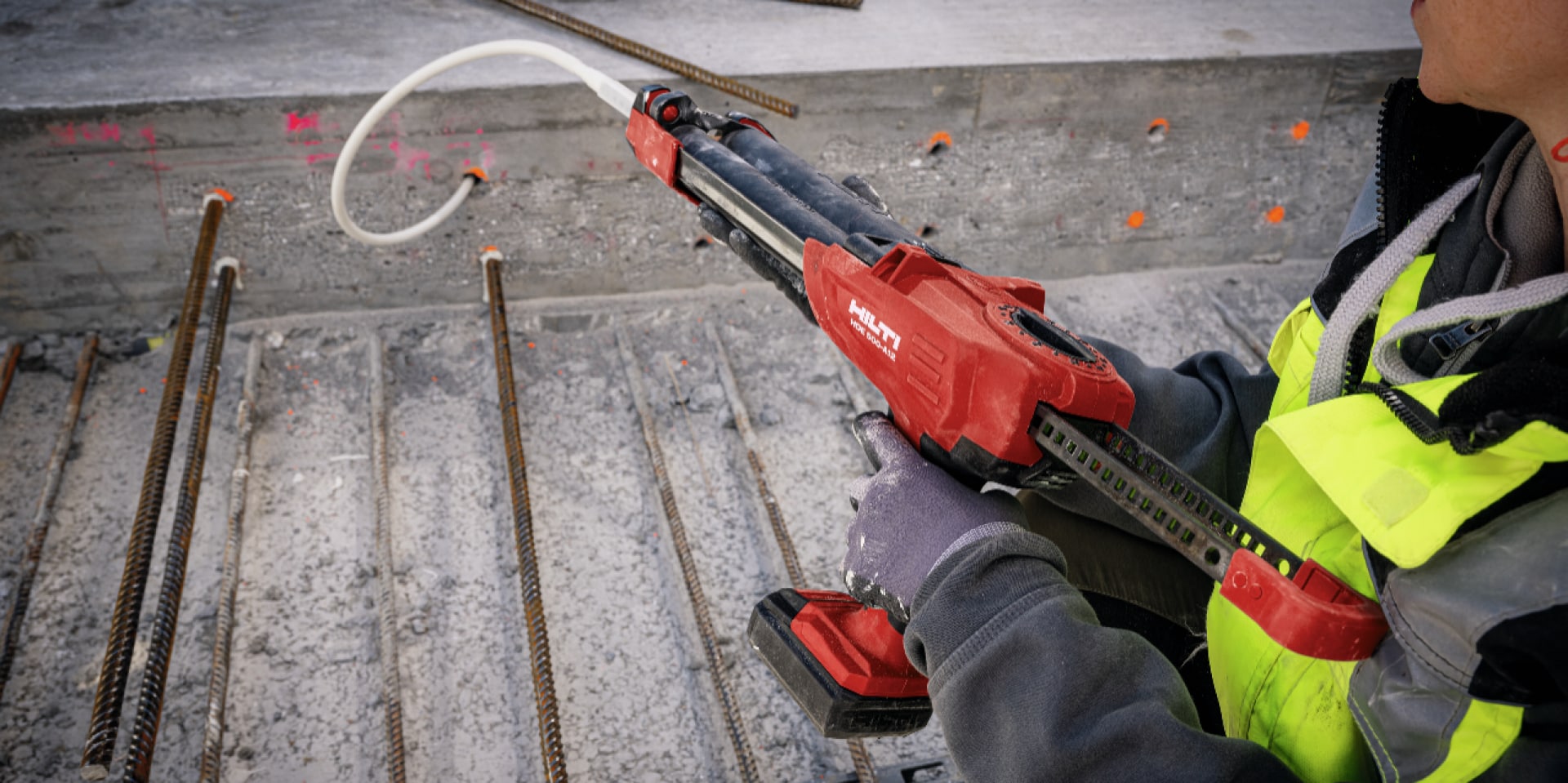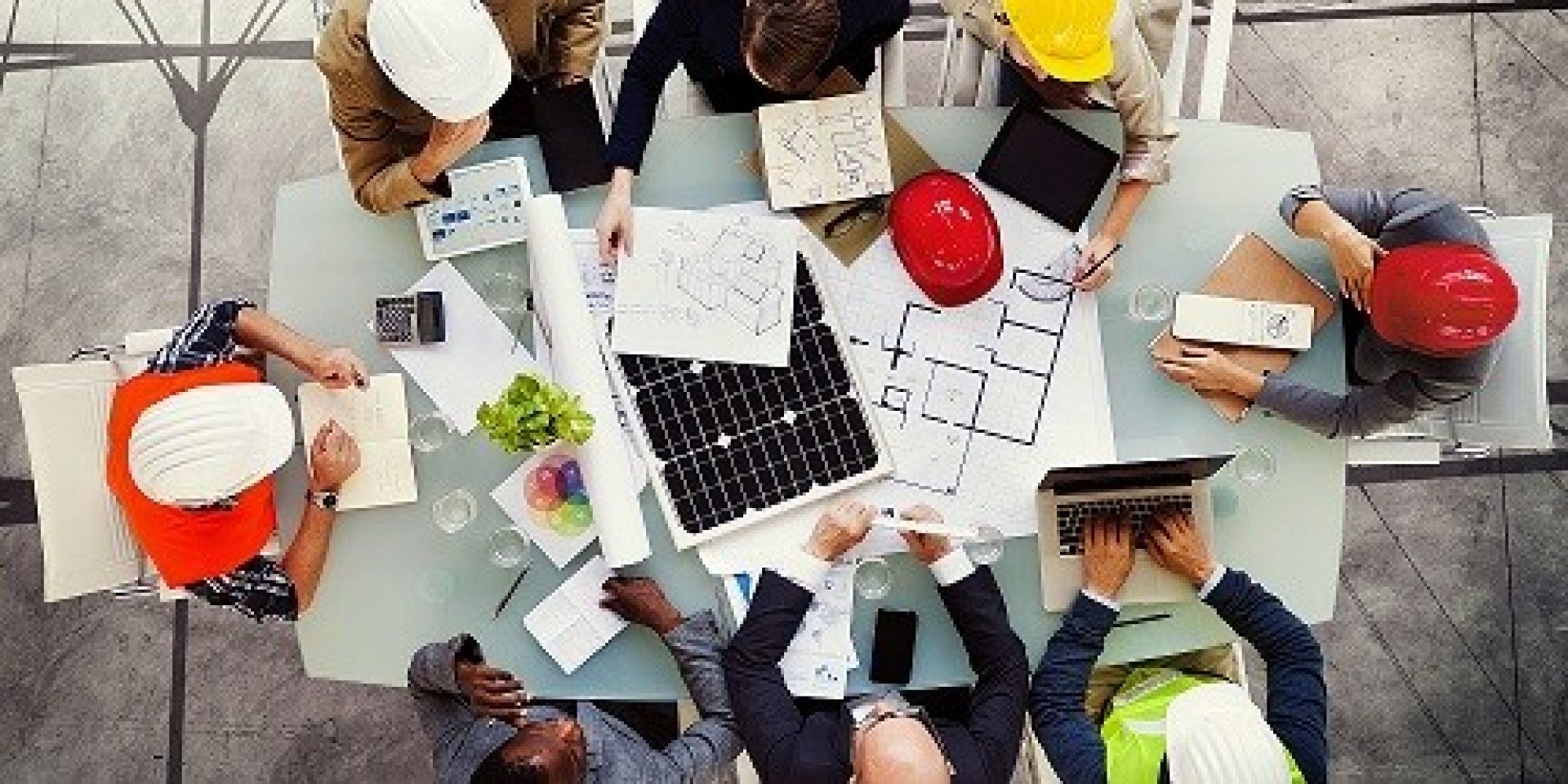- Home
- Solutions
- Business Optimization
- Rebar Design Center

Rebar Design Center
Hilti products and solutions to help solve the tougher post-installed rebar challenges
Advancement in construction technology has created new solutions to help meet the needs of designers, especially for their connection designs. Concrete-to-concrete connections can be supported by post-installed reinforcing bar using the development and splice provisions of the ACI 318 Chapter 25 as well as the anchoring to concrete provisions provided in ACI 318 Chapter 17.
Post-installed reinforcing bars may be designed with ACI 318 rules for cast-in place reinforcing bar development and lap splices with use of an adhesives tested per AC308 Table 3.8. A tested post-installed solution brings new flexibility to a projects by giving designers the option to post-install reinforcing bar for common applications.


Fire design of rebar
Fire-resistant concrete to concrete connections
There are no provisions within ACI 216.1 or other reference codes in the Unites States or Canada that considers the effects of fire on post-installed anchors such as post-installed reinforcing with adhesive anchoring systems that is used to develop rebar just like cast-in rebar. In 2022, ICC-ES Acceptance Criteria for Post-installed Adhesive Anchors in Concrete Elements (AC308) was updated to include a new testing provisions for fire exposure.
Hilti has performed the new tests for fire evaluation in AC308 and ESR-3814 has been updated with data for use in fire conditions for post-installed rebar development connections. Additionally, Hilti has developed a new adhesive product HIT-FP-700 R which is a brand-new injectable cementitious adhesive which has very little sensitivity to heat.

Shear Dowels
Strengthen an existing concrete structure
Strengthening an existing concrete structure through the use of shear dowels is a primary application of post-installed rebar. Though this is commonly done to help improve the performance of concrete slabs and structures experiencing earthquake and seismic loads, the application is not limited to geographic areas experiencing these conditions.
Shear dowels are typically used to resist interface shear across a shear plane – the roughened joint between existing and new concrete. The primary shear mechanism – friction across the irregular surface – is enabled by the shear dowels that hold the surfaces together. Therefore, the standard design assumption is that the shear dowels are placed in direct tension as the irregular shear plane is translated laterally.

Structural Joints
Extend, repair and strengthen existing concrete structures
Post-installed starter bars are used to help extend, rehabilitate and strengthen existing concrete bridges, roadways and other common civil engineering structures. These applications often require enhanced resistance to extreme temperatures and corrosion from chemical exposure and naturally occurring ambient conditions.
Starter bars are typically used to resist tension and shear forces across beam-to-column and column-to-foundation joints. Starter bars are oriented perpendicular to the primary reinforcement of the existing concrete member in which they are installed.

Tension lap splices
Extension of existing reinforced concrete structures
Extending existing reinforced concrete slabs, walls, and columns is a common applications for post-installed rebar. This is often a need for new construction with a preferred construction sequence. For renovation projects, this helps facilitate the expansion of floor space or address other function changes in a structure. Non-contact tension lap splices in which tension loads are transferred between adjacent bars through the surrounding concrete.
Rebar product solutions
HIT-FP 700 R
Better performance adhesive anchor for fire-resistant structural rebar connections.
Shop nowHIT-RE 500 V3
Better performance injectable epoxy mortar with approvals for rebar connections and heavy-duty anchoring.
Shop nowHDE 500-22 cordless dispenser
Nuron battery-powered hybrid/epoxy adhesive anchor dispenser with smart features to help increase speed, safety and reduce waste.
Shop nowCordless rotary hammers
With Hilti cordless rotary hammers you can work faster, obtain better installation quality and help boost jobsite safety with virtually dust-free hole cleaning.
Learn more



